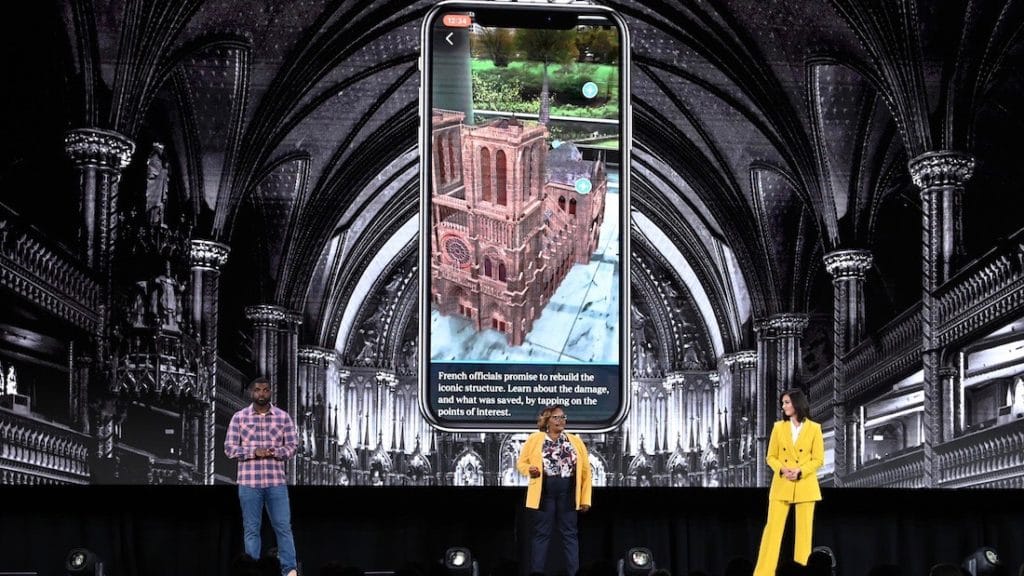For every consumer who’s ever yelled into their cellphone—or at their cellphone—carriers are holding up the promise of better days. Advanced wireless networks being developed now are expected to revolutionize the Internet of Things, connected devices and all kinds of networked experiences.
New 5G technology is expected to be the solution to many user experience headaches, such as slow website speeds, jerky video and more. Thirty-three percent of mobile consumers polled said they expect 5G will be the answer to their connectivity issues and almost 9 out of 10 would upgrade their phones and pay more for 5G service.
“If you’re not excited about anything else, you should be excited about 5G.”
Verizon CEO Hans Vesterberg
The technology is expected to be the fastest-growing generation of cellular technology, according to a study by Ericsson. Forty percent of the world’s mobile subscriptions will use the technology in five years. North America adoption will be even faster, with 55 percent of mobile subscriptions by the end of 2024.
5G offers more than faster speeds, said Verizon CEO Hans Vesterberg in his keynote at the Consumer Electronics Show earlier this year. He explained 5G provides increased mobility, the ability to connect more devices, energy efficiency, reliability and lower latency in content.
Combined with edge computing—distributed computing that puts data closer to the point of use—5G will allow phones to stream the best quality graphics, said Luke Ritchie, head of interactive arts at Nexus Studios. The studio has produced mixed-reality and interactive content for The New Yorker, U2 and a host of others.
Edge computing is about doing “all the crazy computation work” in the server and sending it to the user once it’s ready, Ritchie said. “That frictionless effort will allow us to have Hollywood-blockbuster graphics running on a phone.”
The potential of 5G to alter the user experience is almost unlimited, said Mo Katibeh, CMO of AT&T Business. In a recent Velocitize Talks, he forecast that 5G will improve the user experience in existing IoT and consumer experience applications, allow for development of new functionality by opening more and faster channels, and spur innovation.
“I’m confident that the innovators out there will come up with new use cases that we haven’t even dreamt up yet,” he said.
Retail solutions such as “magic mirrors” and augmented reality will work seamlessly thanks to the shorter latency and faster speed of 5G. It could provide solutions to cart abandonment issues in omnichannel commerce.
“It’s so important for the Chief Marketing Officer and marketers in general to really lean in and understand this emerging technology,” said Katibeh.
At every gathering of marketers and technologists, from CES to South by Southwest to the Digital Content NewFronts, the industry is debating the future of communications and engagement in a 5G environment.
“I’m sure there’s been a zillion 5G conversations this week and there’s a lot of hype,” said Ritchie. While speaking at SXSW, he noted that the power of 5G will disrupt the expectations of consumers by setting the standard for experiences.
“When we’re talking about live experiences… that’s the only experience they are going to want,” Ritchie said. “If you’ve ever come out of the Staples Center and tried to order an Uber and the network is slammed, that is one of the things that is going to be solved.”
Experts say user experiences in every industry, from connected cars to medical diagnostics, will be disrupted by 5G.
“5G is an open invitation not simply to change the way to do certain things, but to fundamentally rethink all of it,” said Dr. Christopher Morley, Co-founder of Medivis. Data connected with the patient and new practices can overhaul medical practices that haven’t changed in 30 years, said Morley, whose company is using technology to change medical imaging and diagnostic tools.
“The wow factor is just going to be the gravitational pull.”
AT&T Business CEO John Donovan
AT&T is working with startups and established companies to develop products, many of which “just won’t work” without 5G, Donovan said. Use cases will start appearing “in the distant, distant future of 2019 going to 2020.”
At NewFronts, Vesterberg noted Verizon Media Group has made a bet on 5G media content, including the launch of its first 5G production studio in Los Angeles. Verizon announced it has developed partnerships with media companies and sponsors to develop content for the new technology.
Reuters and the Associated Press will work with Verizon’s Yahoo News to develop immersive content on 5G and will offer “mobile-first multisensory content” of the 2020 elections, said Charity Elder, head of video and audio, at Yahoo News.
On the sponsored front, Marriott is developing 5G content with Verizon Media to enhance the traveling experience, especially for frequent travelers, on its new Bonvoy loyalty program, said Andy Kauffman, Senior VP, Global Marketing Optimization at Marriott International. Following the merger of Starwood and Marriott, the combined company is looking for fewer and better partnerships to engage Bonvoy members on paid media, he said.
“There’s a lot to be excited about 5G,” said Kauffman. “It comes down to delivering rich experiences, delivered quickly… We’re excited by what 5G can enable.”
